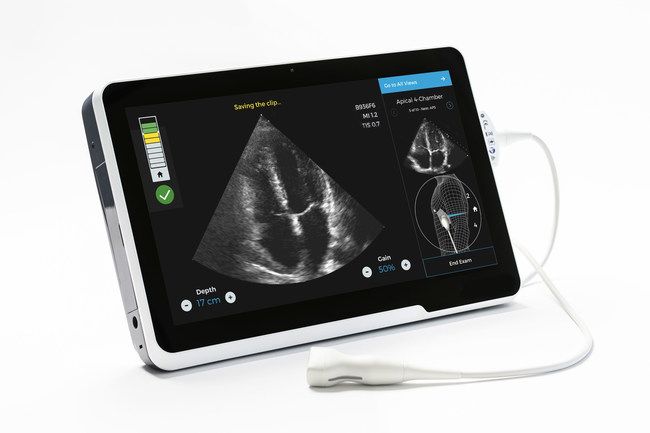Caption Health Receives Expediated Clearance for AI-Guided Cardiac Ultrasound Tool
AI-guided imaging supports assessment of cardiac function and reduces personnel COVID-19 exposure.

After an expediated, 25-day review, the U.S. Food & Drug Administration (FDA) has cleared an update to an existing Caption Health artificial intelligence (AI)-guided medical imaging acquisition system, making it easier for front-line providers to perform diagnostic-quality cardiac ultrasounds.
Called Caption Guidance, according to a company statement, this system provides more than 90 types of real-time instructions and feedback, as well as visual prompts to help users – who might not have years of ultrasound experience – make specific transducer movements that can optimize the capture of high-quality images needed for diagnosis.
“Caption AI provides clinicians with the ability to quickly and accurately perform potentially life-saving ultrasound exams where and when they are needed most,” said Andy Page, Caption Health chief executive officer. “We are proud to assist those on the front lines of this pandemic who are risking their lives to care for patients.”
This Caption Guidance update, which is part of the existing Caption AI software platform, includes 88-percent more types of guidance, improved algorithm performance, and optimized workflow, according to company information. It gives providers who do not have specialized echocardiography training the ability to capture images at the point-of-care, both reducing the risk of COVID-19 transmission and conserving the use of personal protective equipment.
The accelerated FDA review was prompted, company officials said, by requests from various clinicians in hospitals nationwide, detailing the need for a tool that would facilitate the rapid assessment of cardiac function, reduce personnel risk exposure, and maximize the limited resources found in hospital emergency room and intensive care units.
“At Northwestern Medicine, we believe AI-based guidance for cardiac ultrasound acquisition will equip our front-line providers to perform these exams with limited training,” said Akhil Narang, M.D., a Northwestern Medicine cardiologist., in a statement. “This will have a significant impact in our response to COVID-19 while minimizing exposure for our sonographers.”
What is the Best Use of AI in CT Lung Cancer Screening?
April 18th 2025In comparison to radiologist assessment, the use of AI to pre-screen patients with low-dose CT lung cancer screening provided a 12 percent reduction in mean interpretation time with a slight increase in specificity and a slight decrease in the recall rate, according to new research.
The Reading Room: Artificial Intelligence: What RSNA 2020 Offered, and What 2021 Could Bring
December 5th 2020Nina Kottler, M.D., chief medical officer of AI at Radiology Partners, discusses, during RSNA 2020, what new developments the annual meeting provided about these technologies, sessions to access, and what to expect in the coming year.
Can CT-Based AI Radiomics Enhance Prediction of Recurrence-Free Survival for Non-Metastatic ccRCC?
April 14th 2025In comparison to a model based on clinicopathological risk factors, a CT radiomics-based machine learning model offered greater than a 10 percent higher AUC for predicting five-year recurrence-free survival in patients with non-metastatic clear cell renal cell carcinoma (ccRCC).